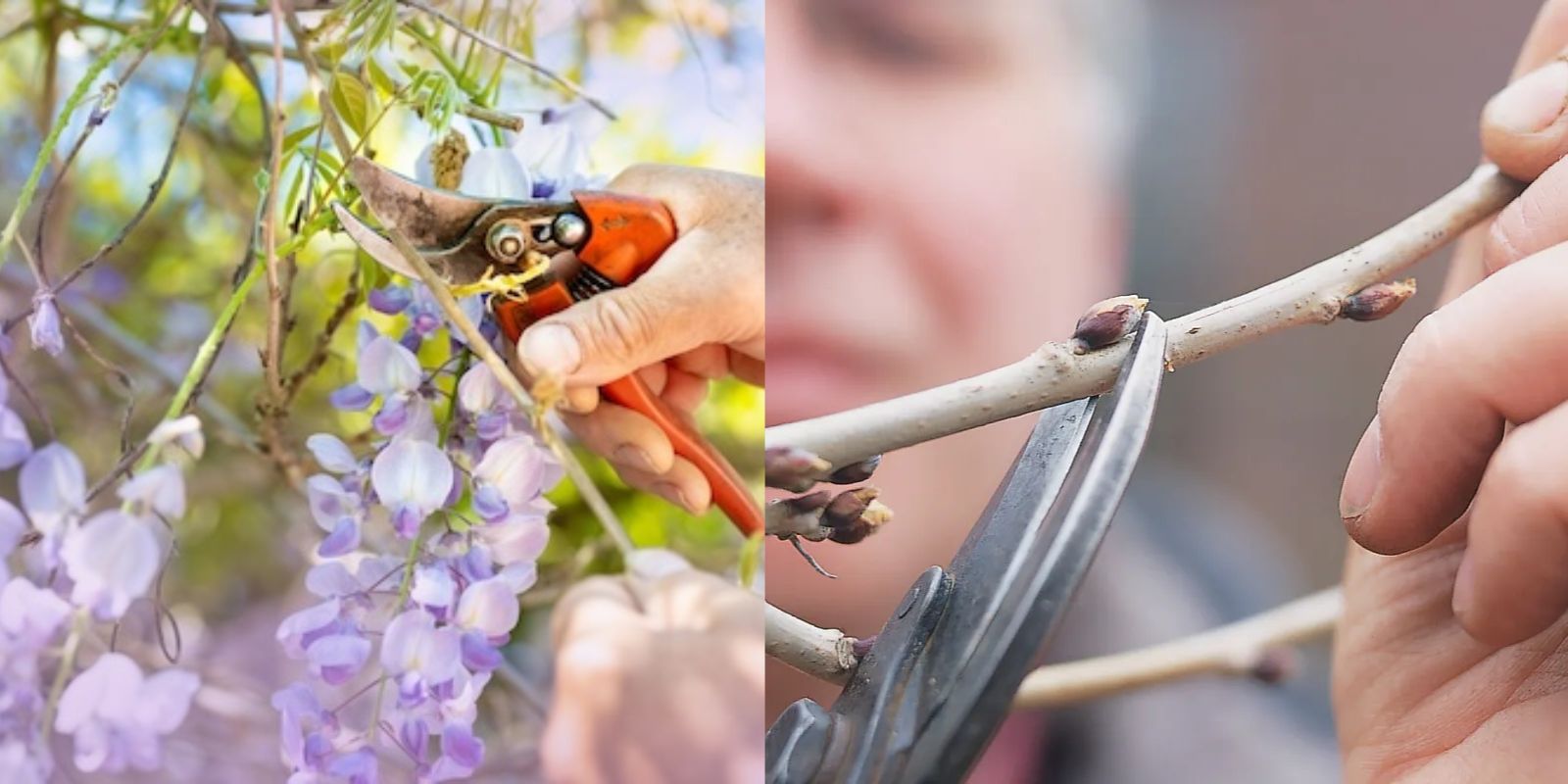Wisteria is a plant celebrated for its stunning cascades of fragrant flowers that can transform any garden into a floral paradise. However, to achieve this breathtaking display, proper pruning is essential. Effective pruning not only shapes the vine but also stimulates prolific flowering. This guide will walk you through the steps of pruning wisteria to ensure your garden bursts with abundant blooms.
Why Pruning Wisteria Matters
Wisteria is known for its vigorous growth and can quickly become unruly if not properly managed. Pruning helps to control its size, shape, and overall health, which directly impacts its flowering performance. Without regular pruning, wisteria can produce fewer blooms and become a tangled mess of foliage. By cutting back old growth and shaping the vine, you allow the plant to direct its energy towards producing new, flowering shoots.
Best Time to Prune Wisteria
The timing of pruning is crucial for maximizing flowering. The ideal time to prune wisteria is in late winter or early spring, before the plant begins its new growth cycle. During this dormant period, you can clearly see the structure of the vine and make informed decisions about what to remove. Pruning at this time also allows the plant to focus its energy on producing flowers rather than on unnecessary growth.
Essential Tools for Pruning
Before you start, gather the following tools to make the process easier and more effective:
- Bypass Pruners: For cutting smaller branches and stems.
- Loppers: To handle thicker, woodier branches.
- Pruning Saw: For larger, more established branches.
- Gloves: To protect your hands from thorns and rough bark.
Step-by-Step Guide to Pruning Wisteria
1. Remove Old Flower Clusters
Begin by cutting back the old flower clusters that have withered. These clusters, if left on the vine, can inhibit the growth of new flower buds. Remove these spent blooms along with any dead or damaged wood. This process not only tidies up the plant but also redirects the plant’s energy toward producing fresh blooms.
2. Shorten Long Shoots
Wisteria tends to produce long, vigorous shoots that can quickly overtake the plant. Trim back these lengthy shoots to encourage lateral growth. By cutting them back to about 6-12 inches from the main stem, you promote the development of shorter, flower-bearing branches. This pruning helps in maintaining a manageable size and ensures that the plant puts more energy into flowering rather than growing excessively.
3. Shape the Vine
Shaping your wisteria is essential to create an aesthetically pleasing structure and to ensure that all parts of the plant receive adequate light and air. Trim the vine to maintain an open framework, which allows for better circulation and reduces the risk of fungal diseases. Aim to create a balanced shape, whether you’re training the wisteria to climb a trellis or drape over an arbor. Regular shaping also prevents the vine from becoming too dense, which can hinder flowering.
4. Thin Out Excess Growth
Overgrowth can lead to a crowded and tangled vine, which impedes blooming and creates a habitat for pests. Thin out excess growth by removing some of the new shoots. Focus on cutting away weak or crowded branches to improve the overall health of the plant. This thinning process helps to ensure that the remaining branches have enough space to develop and produce flowers.
5. Maintain Regular Pruning
Wisteria benefits from consistent maintenance throughout the growing season. After the main pruning in late winter or early spring, perform light pruning in summer to manage any new growth. This additional pruning helps keep the plant in check and encourages more blooms for the following year.
Post-Pruning Care
After pruning, it’s important to care for your wisteria to support its recovery and enhance its flowering potential. Apply a balanced fertilizer to provide the necessary nutrients for robust growth and blooming. Water the plant regularly, especially during dry periods, to keep it healthy. Additionally, keep an eye out for pests and diseases, and address any issues promptly to prevent them from affecting the plant’s performance.
Troubleshooting Common Issues
**1. *Limited Blooming:* If your wisteria isn’t blooming as expected, it might be due to excessive pruning or incorrect timing. Ensure you’re not cutting back too much foliage and that you’re pruning at the correct time of year.
**2. *Weak Growth:* Weak or sparse growth can result from nutrient deficiencies. Provide appropriate fertilization and ensure the plant receives enough water and sunlight.
**3. *Pest Infestations:* Wisteria can attract pests such as aphids or scale insects. Regularly inspect the plant and use appropriate pest control methods if necessary.
Conclusion
Pruning wisteria is a key factor in achieving a spectacular floral display. By removing old growth, shortening long shoots, shaping the vine, and thinning out excess growth, you help your wisteria thrive and produce an abundance of beautiful blooms. Regular maintenance and post-pruning care further ensure that your wisteria remains a vibrant and captivating feature of your garden.
With the knowledge and techniques outlined in this guide, you can confidently tackle wisteria pruning and enjoy the rewards of a lush, flowering vine that will enhance your garden for years to come. Embrace the pruning process, and let your wisteria shine with a dazzling array of blooms!

